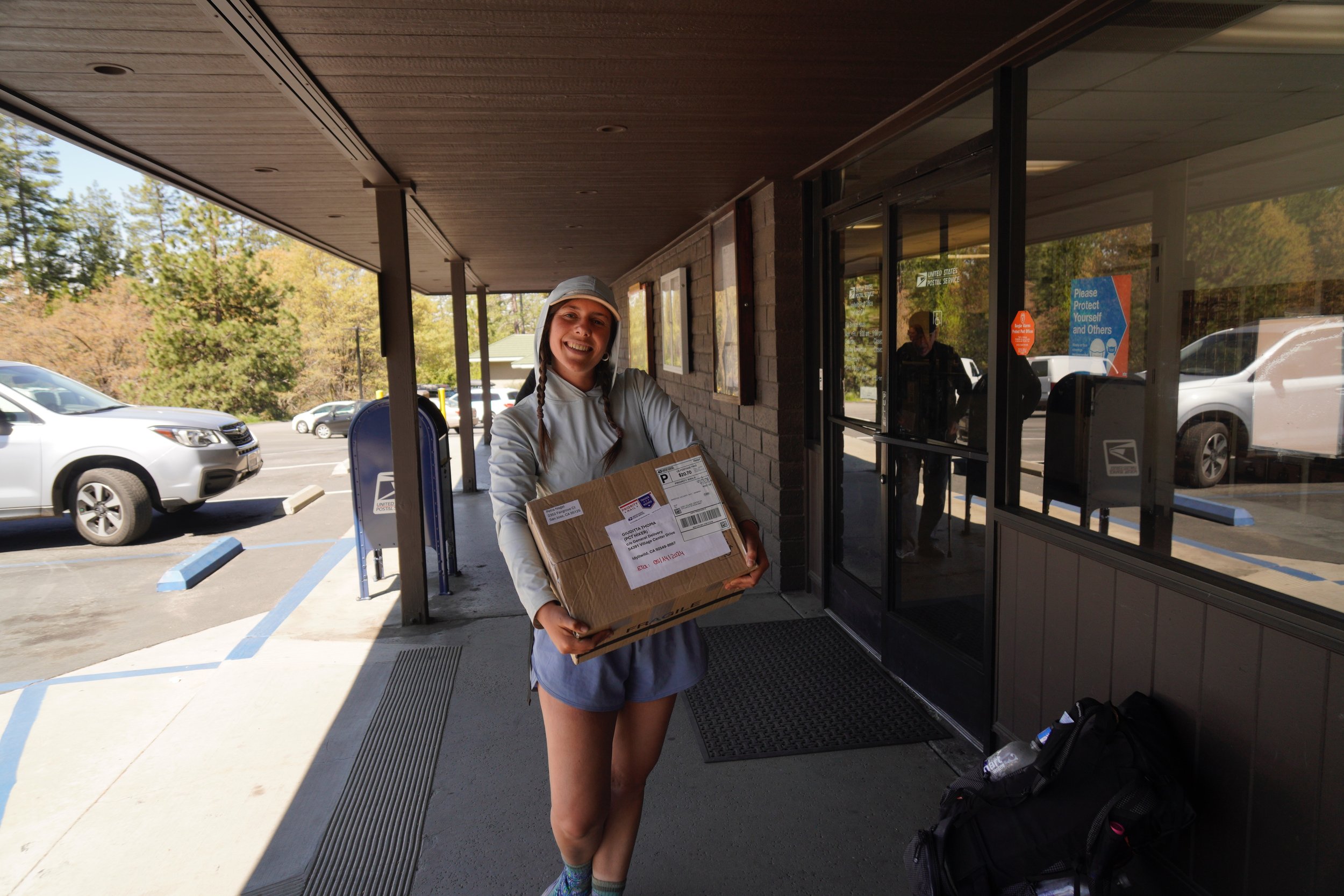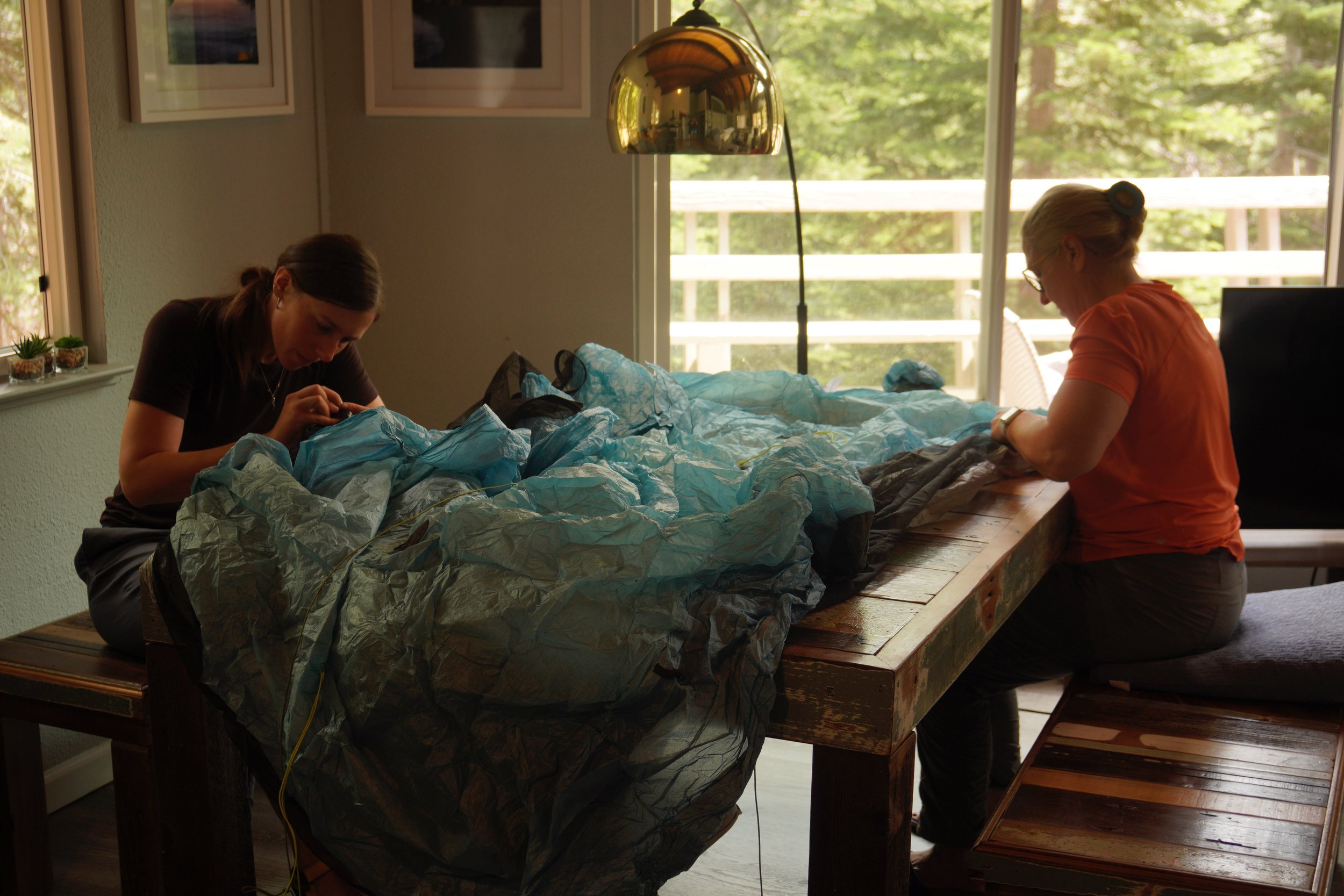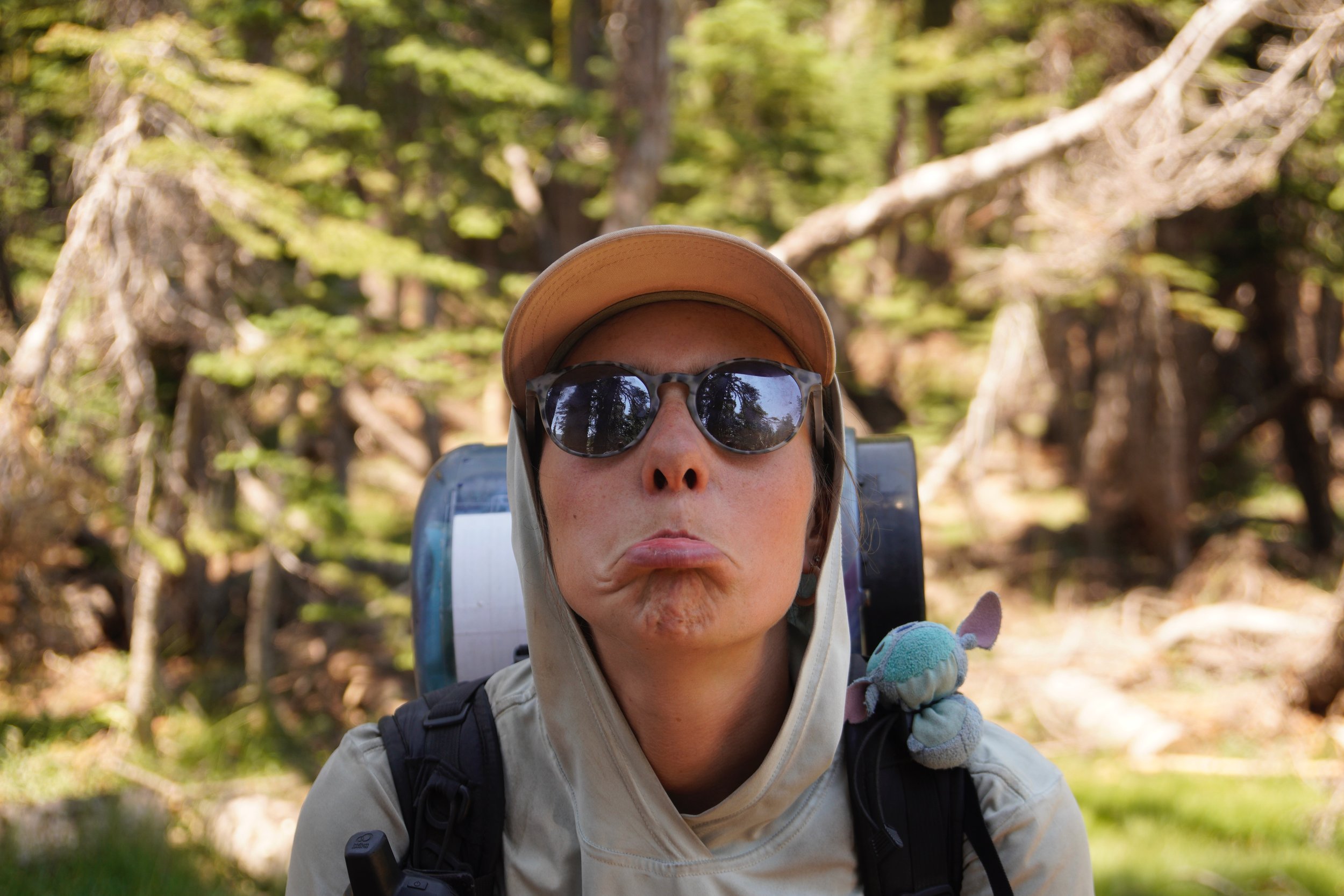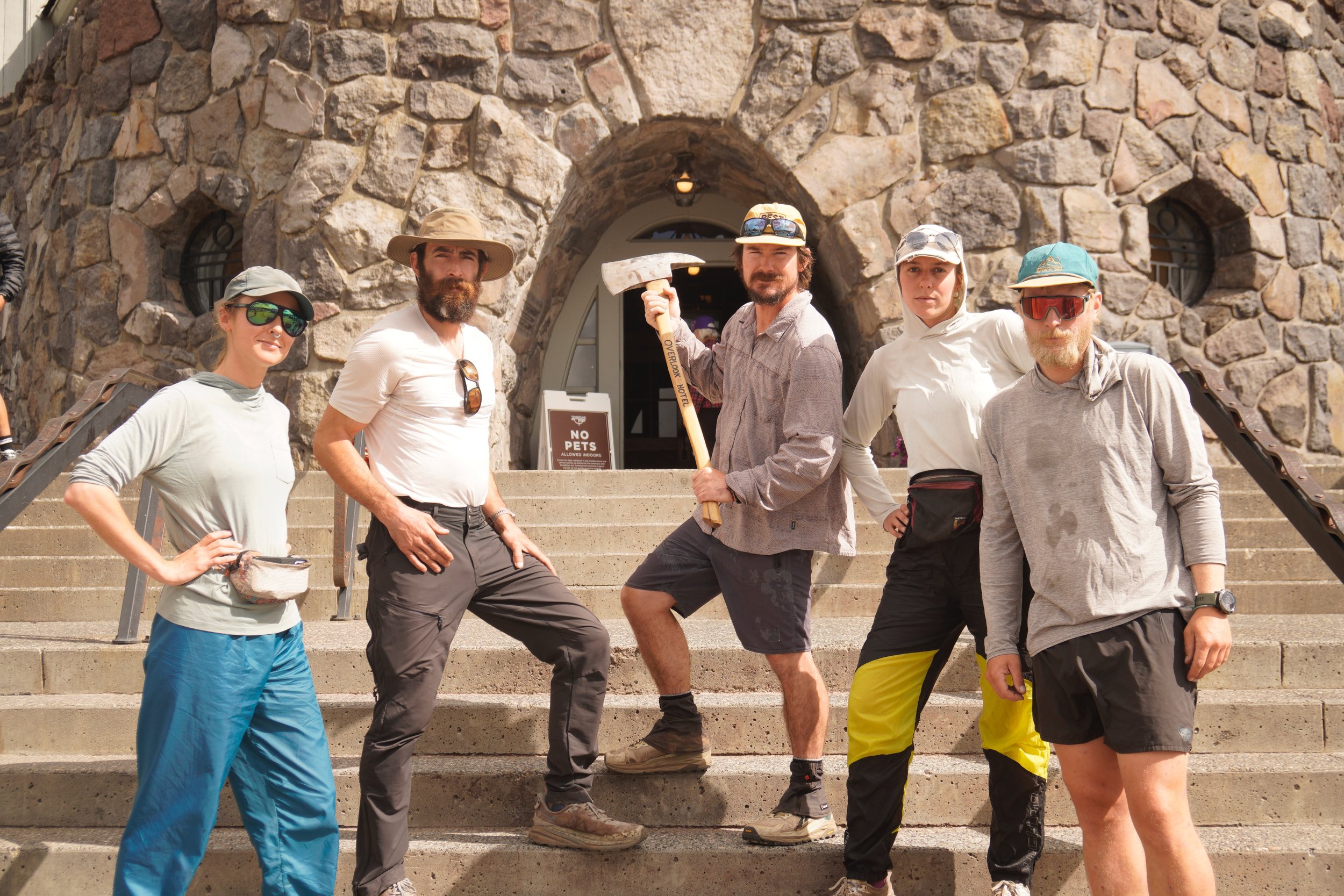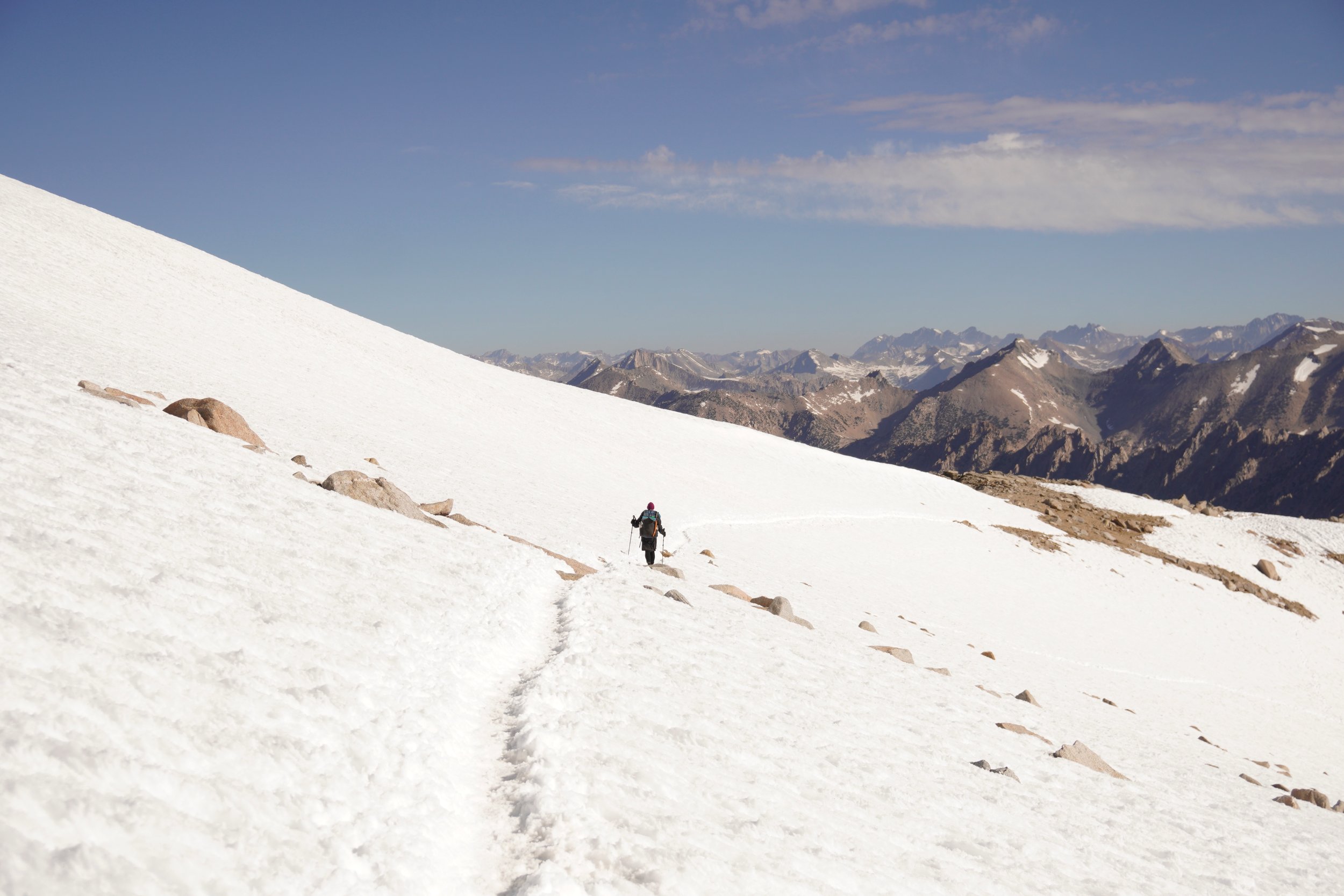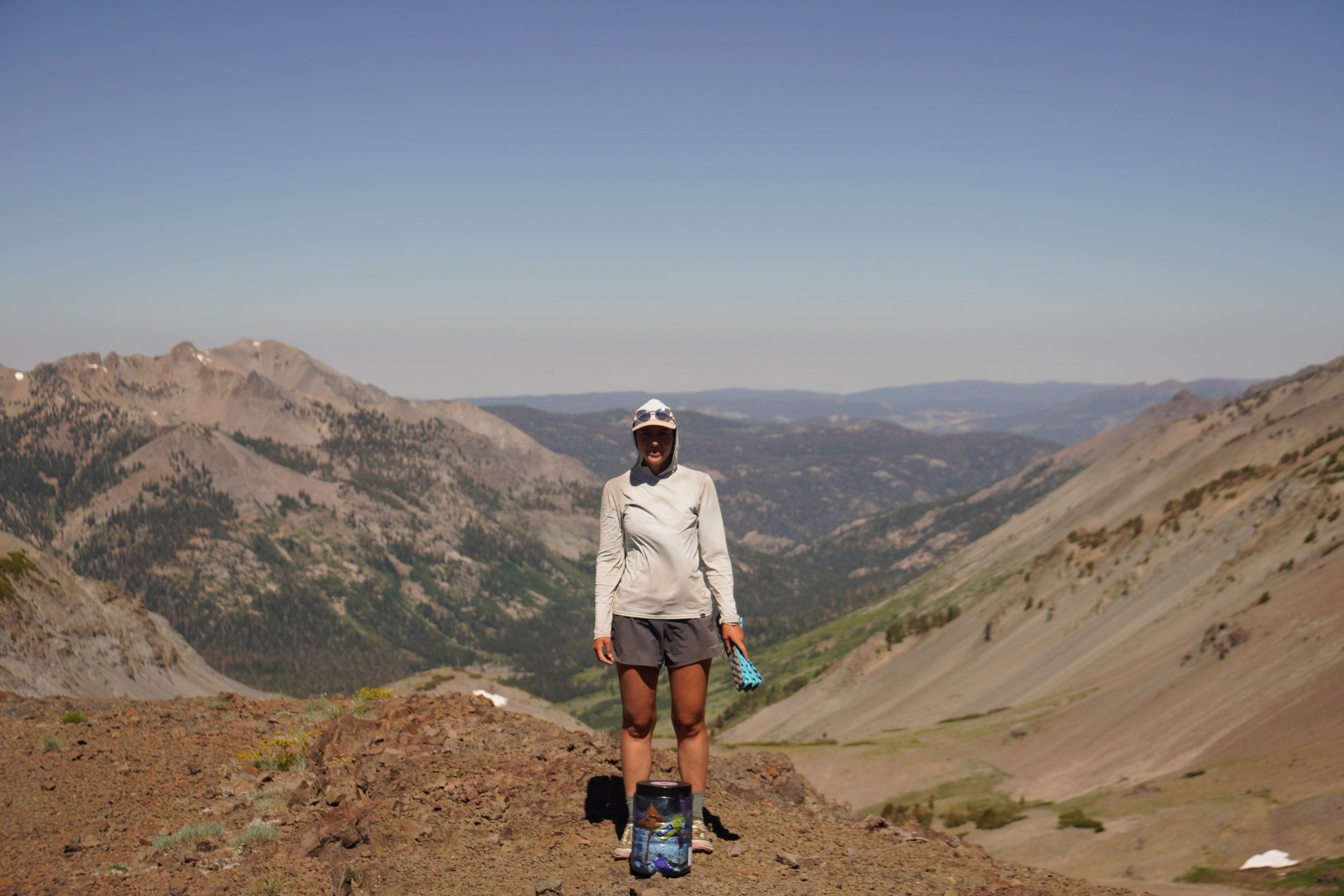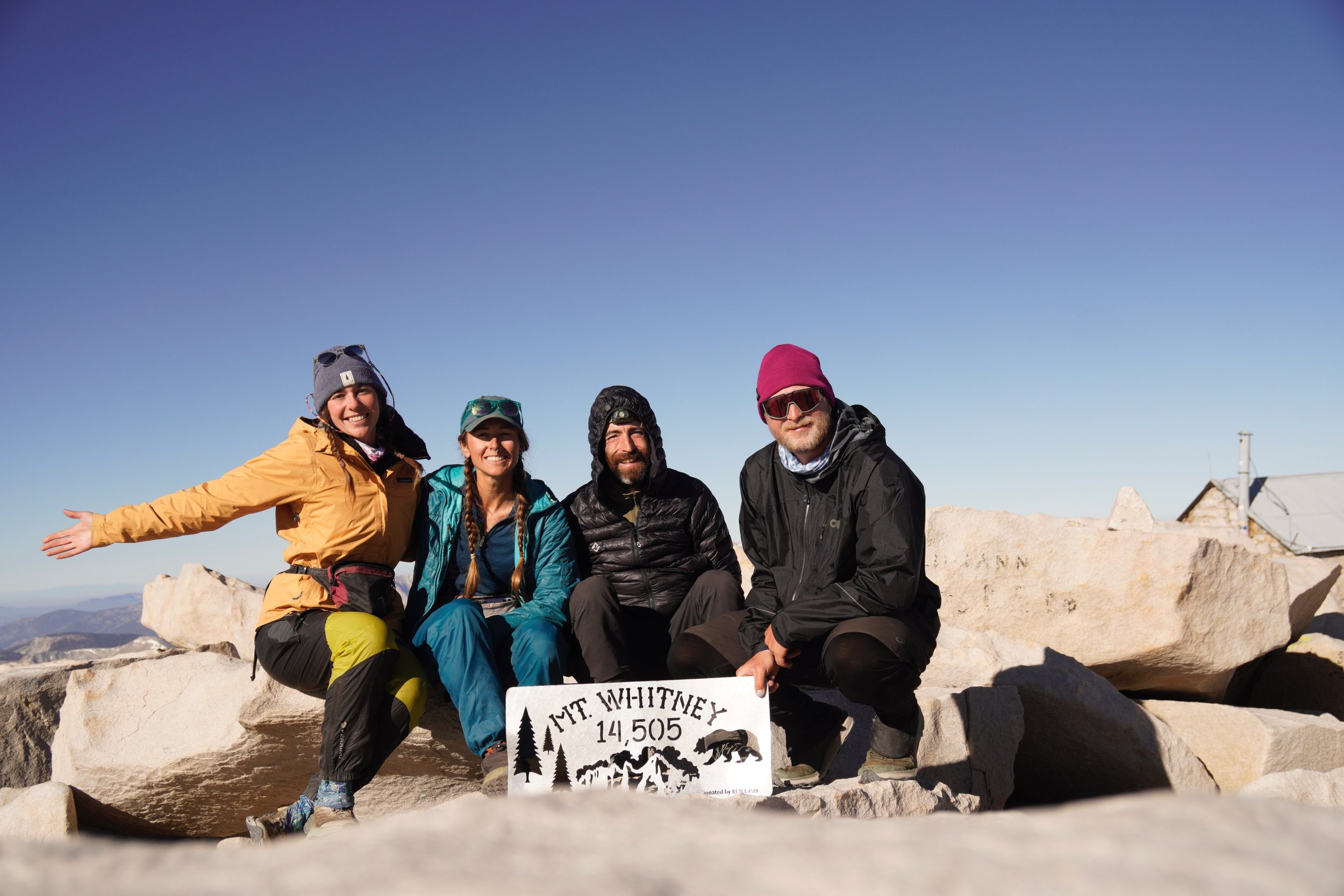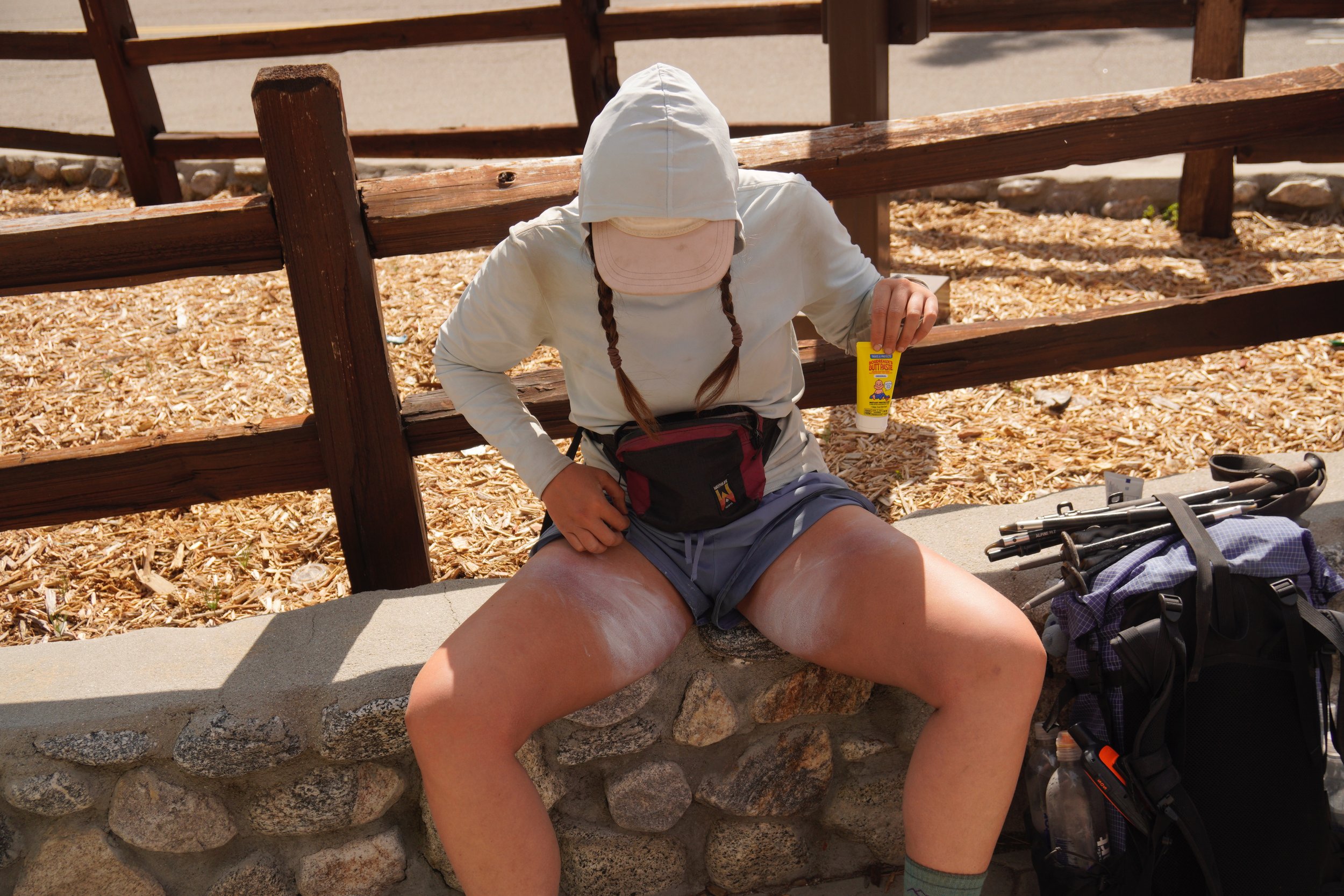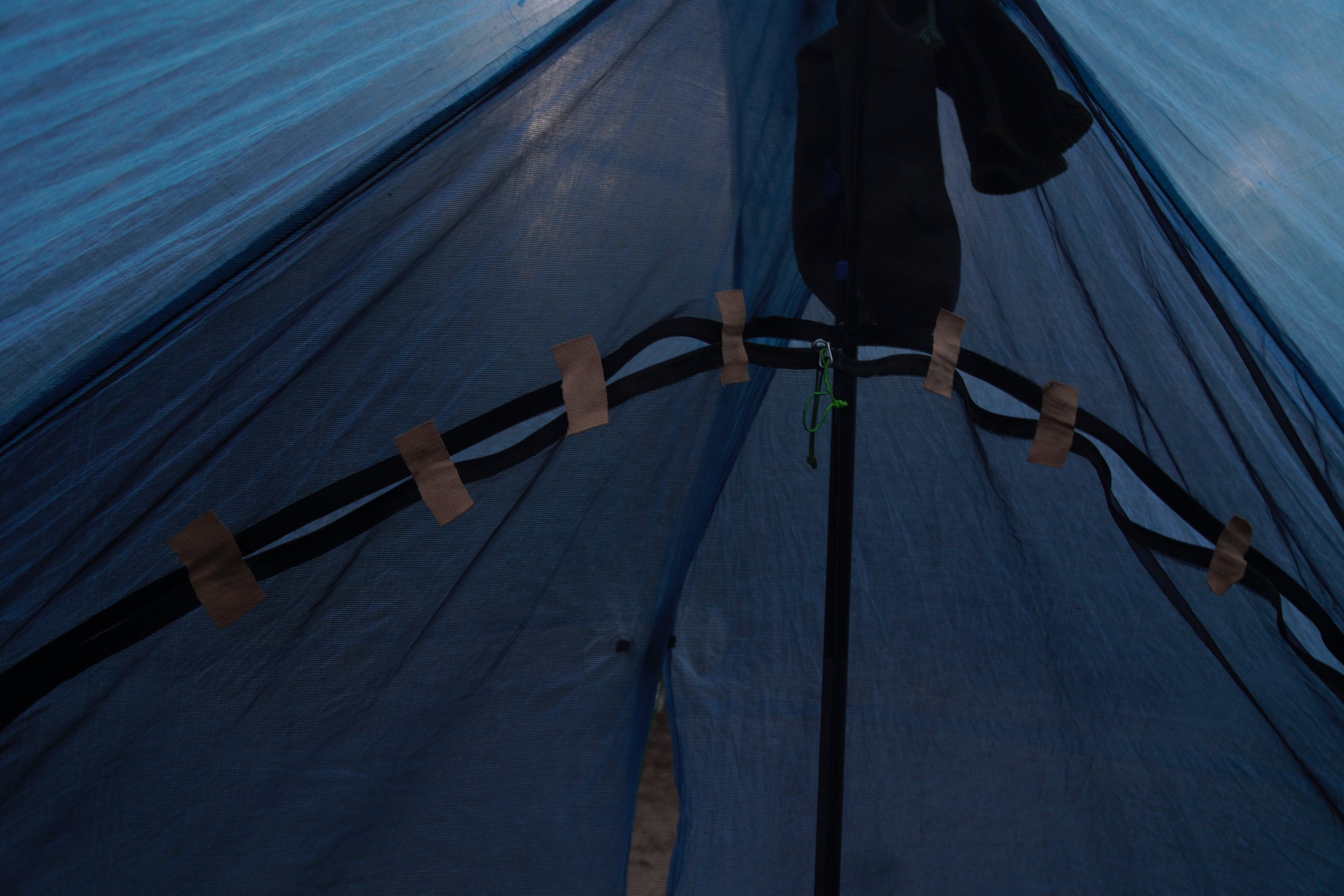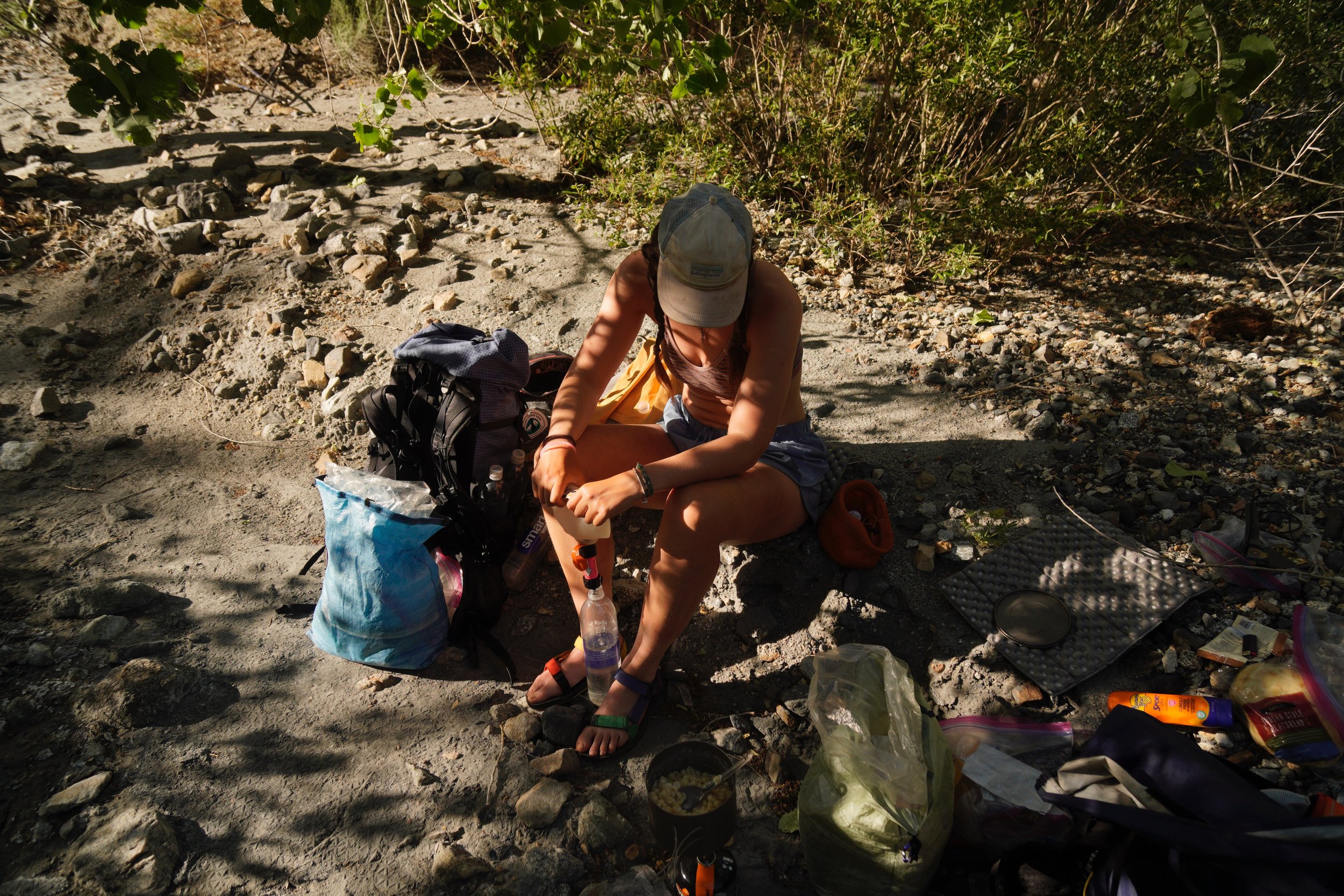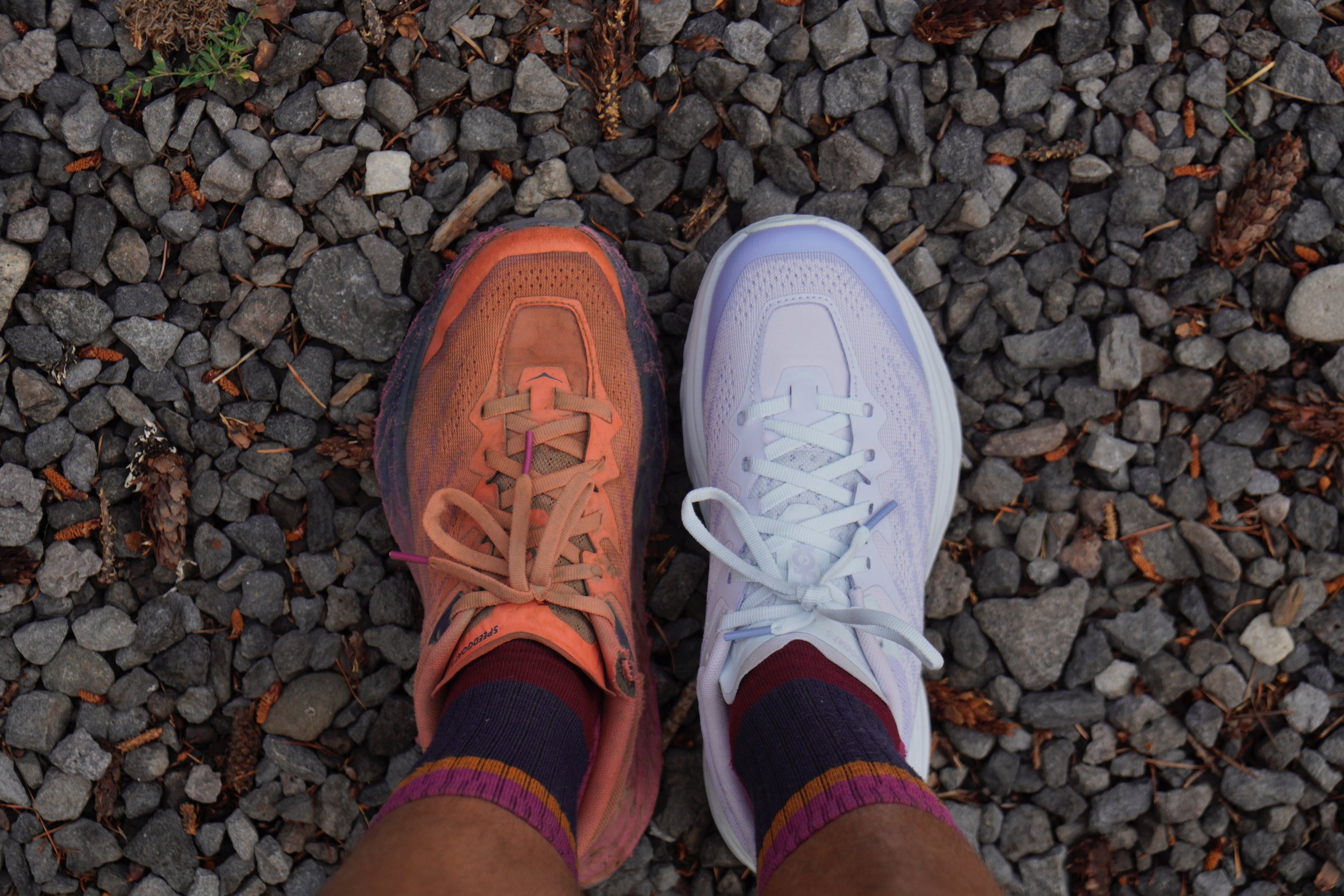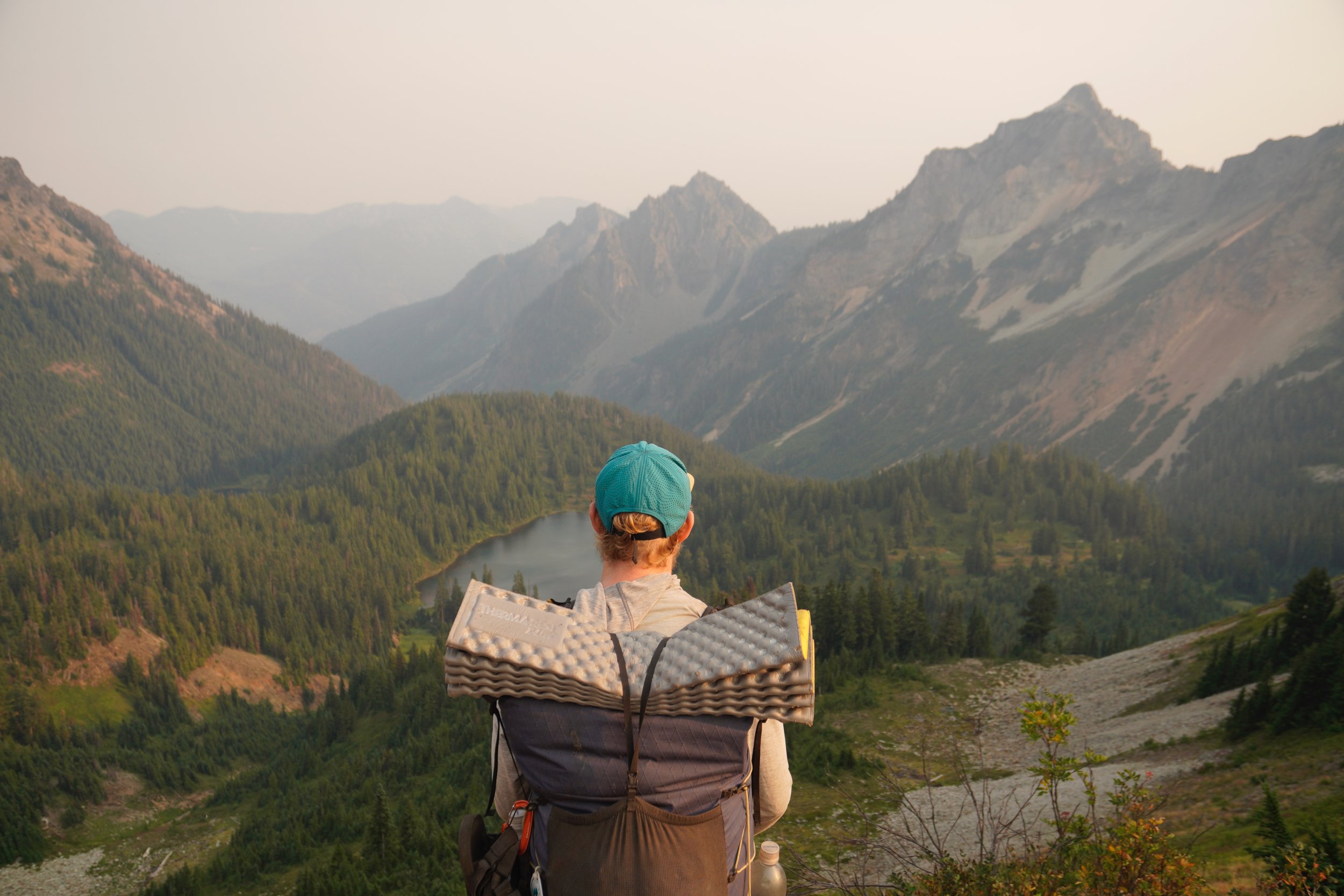PCT | Final Gear List
Before flying to the US to hike the Pacific Crest Trail, both Chef and I were quite stressed out by the topic of “gear”. We indeed wanted to have the perfect gear list and desperately tried to reduce our base weight to a minimum, while keeping a certain level of comfort and luxury items. We wanted to have it all figured out before even setting foot on the trail. A few days into our thru-hike, we however realized that the trick was all about being flexible, adapting and improvising.
A few tips
You don’t need it? Get rid of it!
While hiking, we quickly noticed which gear we were not using and got rid of it by placing it in a hiker box or by sending it back to Petra, our “Trail Mom” based in the USA.
Lilo at the post office in Idyllwild.
Gear breaks. Be patient and learn how to repair it!
We also learned a bitter truth: gear, no matter the quality and the price, when used day after day during a thru-hike, will eventually break. Therefore, we learned to be patient and to react quickly, either by buying new gear online and sending it to towns ahead of us, or by finding out how to repair it on trail.
💎 The sleeping pad odyssey:
I have to admit I did loose my shit when my sleeping pad deflated for the 1000th time at night after I thought I had repaired it.
During the day, I was stopping at every damn lake, inflating my pad and desperately trying to find the damn hole… in the end, I just found myself sleeping on the cold tent floor over and over again.
I ended up buying a new pad and guess what?! It deflated the first night I used it, because of a manufacturing defect (how funny).
Cleopatra and Lilo at Chicken Spring Lake, peacefully floating on the sleeping pads, hoping to spot the hole that was causing their deflation the previous night.
⛺️ The tent zipper nightmare:
Oh… and did I tell you about our tent zippers? They failed exactly when we needed them the most, as we were crossing the “mosquito hell” in the Sierra. We therefore ended up sleeping with an open net for a few weeks (hello insects!).
We learned what the actual problem was: the zipper was not closing anymore, because the metal of the sliders wore down over time due to the dust on trail. We quickly ordered the replacement sliders and two weeks later we repaired the zipper during our zero in Truckee. The procedure took us 3 hours, but I am proud to say it was a success!
Our advice it to always have a pair of extra sliders in your repair-kit.
Petra and Lilo repairing the tent’s zippers in Truckee.
Try out new things!
I thought I already knew my equipment very well, but it turned out I was wrong. During the PCT, I got to try out different product brands and models, and often got positively surprised by gear that I thought I would never need. I guess there is always something new to learn when it comes to gear!
☀️ The sun hoodie example:
I initially planned to wear a normal merino t-shirt for hiking, as usual. However, once in the US, Chef decided to buy a sun hoodie: a long sleeve hooded shirt that provides UV protection. I therefore decided to also give it a try and simply fell in love with it. I’ll never hike without it again!
Lilo proudly wearing the hoodie.
Final Gear List
Here is our final gear list, a list that was refined day by day over the entire duration of our thru-hike. The listed items were the ones that were always present in our backpacks, from Mexico to Canada.
I thought to link our initial gear list as well, the one we had at the start of our adventure. I find it nice to see how gear lists evolve after an experience on a long trail!
Separately below, you can find the lists of:
Section-specific gear: additional items we carried on specific sections.
Gear we sent home: items we got rid of while on trail.
Gear we additionally bought: items we purchased while on trail.
Gear we swapped: items we changed while on trail.
⭐️ Tip for couples:
If you use a laptop to read this article, you’ll be able to see the gear pieces that we shared during our thru-hike. They are marked with a star.
♥️ Important note:
Use this gear list for inspiration, but don’t take it as the one and only way to go! “Gear” is a very subjective topic, as every hiker is different and therefore has different needs while on trail. Find what suits you best and HYOH!
And what about the axe from “The Shining”? Well, that was too heavy to steal from the hotel…
Section-specific gear
☂️ These items are not mentioned in the lists above!
Gaiters (32 g): useful to keep dirt and sand out of your shoes. We used them in the Desert only, although many people kept them for the whole trail.
Micro Spikes (373 g): we used them in the Desert on the San Jacinto mountains (from Idyllwild to Cabazon), and in the Sierra (from Kennedy Meadows South to Tuolumne Meadows). They proved to be very useful for additional grip on the snow!
❄️ Depending on the snow conditions, you’ll maybe need them more often or even not at all!
Ice Axe (245 g): we carried it, but never actually used it, in the first stretch of the Sierra (from Kennedy Meadows South to Bishop).
⛄️ Depending on the snow conditions, you’ll maybe need it more often or even not at all!
Chef on the snow-covered descent from Forester Pass.
Bear Hanging Rope (98 g): we both carried a 50 ft. long cord for hanging our food on trees from Big Bear Lake onward. We mainly used it from Truckee (where we got rid of our bear canisters) until the end, hence in NorCal, Oregon and Washington.
Bear Canister BV500 (1162 g): a bear canister is mandatory in the Sierra (from Kennedy Meadows South to Kennedy Meadows North). However, we recommend to keep it until Truckee or Sierra City (NorCal), as it is also required in the Desolation Wilderness (just after South Lake Tahoe). We rented ours from Triple Crown Outfitters in Kennedy Meadows South, and sent it back from Truckee.
Lilo and her “beloved“ bear canister.
Mosquito Net (23 g): this head net was essential for our survival in the Sierra during the first half of July, as the mosquitoes were the worst. We carried it from Kennedy Meadows South until the end of the trail.
🦟 Depending on snow conditions, temperatures and start date, you’ll maybe need it at a different time / section of the trail! For example, we were expecting mosquitoes to be much worse in Oregon, but it thankfully did not happen.
Heavy Gloves (95 g): I kept them in my pack from Kennedy Meadows South until the end of the trail, and used them in cold weather in the Sierra, Oregon and Washington.
☁️ If you have an early start date (March - April), you’ll maybe need them in the Desert as well!
Beanie (66 g): same as the gloves, I carried it from Kennedy Meadows South until the end, and loved wearing it on cold evenings.
Thermal Pants (133 g): I carried them in the Sierra (from Kennedy Meadows South to Truckee) and again in Washington (from Cascade Locks until the end). However, I actually only used them in the first stretch of the Sierra, especially while summiting Mount Whitney at sunrise.
Lilo, Cleopatra, Pacman and Chef, wearing thermals and beanies on top of Mount Whitney.
Rain Pants (206 g): Chef and I had different strategies regarding pants. He walked in shorts and had rain pants for colder evenings and rainy days. I also walked in shorts but preferred wearing wind pants in the evening and colder days, which were more breathable and lighter in the pack, but not waterproof. It was a bit risky but it worked out, at least until Oregon. I then got my rain pants in Bend and I carried them until the end.
⚡️ In Oregon, the weather got worse and we walked through two miserable days of cold temperatures, constant rain, hail, thunder and lightning storms. This showed us the power of nature’s elements and made us realize how exposed and vulnerable we were while on the trail. We therefore decided not to risk it anymore and carry the rain gear until the end of the PCT.
Rain Poncho (226 g): we would recommend carrying a rain poncho in/from Oregon.
💧 During the two-days of insistent rain we faced in Oregon, my backpack cover started failing and the inside of my pack started getting wet. I was very lucky to find a rain poncho on the second day at the Olallie Lake Resort. It served as an additional cover on top of my pack and additional layer against the cold. I carried it until the end.
The miserable weather we had in Oregon. I am cold just by looking at this picture.
Gear we sent home
📦 These items are mentioned in the “Initial Gear List“ only!
Fleece: I figured that I was sufficiently equipped for cold evenings with a thermal shirt, a puffy and a rain jacket. I sent my fleece home while hiking in the Desert and never regretted it.
Light Gloves: I realized that either it was cold and I needed to wear heavy gloves, or it was warm enough not to need any type of gloves. However, Chef kept his light gloves for the whole trail… so that’s really a “cold vs warm hands” subjective matter!
E-Reader: we were both way too tired for reading in the evening, and started listening to audiobooks instead.
Extra Batteries: I initially wanted to use them as replacement batteries for my headlamp. However, the heat of the desert destroyed them so they turned out to be useless. I therefore started buying and replacing the batteries directly in town as soon as I noticed my lamp was becoming weaker. However, I would recommend avoiding this problem by buying a rechargeable headlamp!
Mirror: it turned out to be useless.
Menstrual Cup: I had my period the day I started hiking the PCT (of course). I just hated the whole process with the menstrual cup… it was a messy nightmare for me, so I switched back to tampons and pads, but that’s just my personal preference.
Journal & Pen: it was easier for me to write a diary on my phone using the “notes app”.
Sunglasses’ Neck Loop: it broke during week one, and I never felt the need to buy a new one.
The content of our backpacks before being decluttered. Jokes aside, this was a trail angel’s garage containing a lot of useful (and useless) stuff for thru-hikers.
Gear we additionally bought
🎁 These items are mentioned in the “Final Gear List“ only!
Pot Scraper: we bought this scraper to clean our pots after dinner and we loved it!
Imagine the luxury of not going to bed with sticky hands smelling like Mac & Cheese :)
Fuel Transfer Device: this tiny device allowed us to save some money on fuel, as we started filling our gas canister with the leftover fuel of the cans found in hikers boxes.
KT Tape: this tape was very useful, both for relieving pain from the bottom of my foot and for generally keeping plasters in place on top of blisters and wounds.
Anti Chafing Cream: before adventuring on the trail, we definitely underestimated the problem of chafing. This cream was a “must have” for us!
Lilo applying “baby butt paste” on her thighs, desperately trying to relieve chafing.
Repair Glue: combined with a tear-aid kit patch, it was perfect for sealing holes in our sleeping pads.
Zipper Sliders: the tent’s zipper sliders often wear down over time due to dust and dirt. When this happens, you’ll need to replace them, otherwise you’ll not be able to close the zipper anymore! Therefore, we highly recommend to carry a pair of extra sliders in your repair-kit.
Just to give you an idea of how miserable we felt when our tent zipper broke… this was our situation while walking through “mosquito hell“ in the Sierra. KT tape also proved to be a useful temporary solution for keeping the net “closed“ at night.
Massage Ball: I never thought this little piece of gear could literally save my hike! In Oregon, I started feeling sharp pain in the sole of my feet, and every step I took was a torture. I tried to massage my feet by hand during every break but it did not really help. One day, Popeye threw at me his little massage ball and, although reluctant at first, I started massaging my feet with it. It was revolutionary, and I ended up buying one!
Gear we swapped
🔄 These items are differently mentioned in both lists above!
Sleeping Bag: we both swapped our sleeping bags for quilts at the end of the Sierra (in Truckee) and honestly, I think I’ll never go back to a sleeping bag. My Katabatic Flex quilt had a higher comfort temperature rating (15°F) than my Western Mountaneering Versalite sleeping bag (10°F), and it just felt perfect. However, what really made me fall in love with it was the freedom of movement it gave me at night!
Sleeping Pad: I am a “side sleeper” and I like to sleep on inflatable pads at night, but omg what a nightmare it was to wake up in the middle of the night on a deflated pad. Both Chef and I had to patch so many holes, and I got to a frustrating point where my pad was deflating and I was not able to find any hole in it. So I ended up buying a new one, hence going from the previous (old valve system) to the newest Therm-a-Rest NeoAir Xlite model (new valve system).
❓ This didn’t really solve the issue and I am still looking for a better solution.
Should I sleep on foldable pads only?
Place a protective layer below the tent?
Place a foldable pad below the inflatable pad?
Change brand?
Change model?Please, I need your help… let me know about your sleeping pad solution through the Trail Chat !
Water Filter: our initial water filters (Chef had a Katadyn BeFree, while I had a Sawyer Mini) slowed down so much that we decided to replace them. We both tried out the classic Sawyer Squeeze filter and it was the best decision ever! The filtration process was very fast and the coupling device allowed us to filter water using gravity… we could actually relax during our breaks!
Lilo sweating while filtering water with her previous filter, the Sawyer Mini.
Shoes: we both used 6 pairs of shoes during our thru-hike. On average, we changed to a new pair every 450 miles, as the cushioning was consumed and we wanted to avoid foot injuries. I wore Hokas Speedgoat (v5 and v6) and Chef wore Topos Pursuit (v1 and v2) and both of us had to increase size, as our feet grew while hiking.
🥾 Find a comfortable shoe brand and model before the trail and make sure it’s available in the US. The tiny shops on the trail mostly sold Topos and Altras, but Hokas were also easy to find in bigger towns and to order online.
It felt so good to change to a new pair of shoes and walk on clouds for a while.
Puffy Jacket: I also needed a new puffy (yes I know, I spent a shitload of money on gear), since the zipper on my old jacket failed and I wasn’t able to close it anymore. I changed from a Patagonia Micro Puff to a Nano Puff, and liked them both equally.
Shorts: I started hiking with Patagonia Baggies, but ended up hating them. Their quite rigid textile was rubbing against the skin of my thighs and caused terrible chafing. I switched to Patagonia Strider Pro shorts and it was a much better option for me!
This were the shorts that gave me chafing… RIP beautiful Patagonia Baggies :(
Medicines: on a long thru-hike, you’ll inevitably need to replace some of your medicines and creams. For instance, we had to buy new ibuprofen tablets (Advil instead of Irfen Dolo) and new creams for pain and inflammation (Voltaren instead of Devil’s Clow Gels), for wounds (Neosporin instead of Ialugen), and for skin rushes (Cortizone instead of Fenistil).
💊 If you’re a foreign hiker, you’ll get to know the US medicine brands and don’t hesitate to ask for advice once you are there!
Sitting Pad: we decided to ditch our sitting pads and bought foldable Therm-a-Rest Zlite Sol pads, that we placed underneath our inflatable pads at night. We adopted this strategy to better protect our inflatable pads from being punctured again and to provide safety insulation in case of disaster. The foldable pads were very comfortable during breaks too, as they allowed us to lay down like proper hiker trash people!
Chef wearing his foldable sleeping pad like silver wings… “He was a fairy”.


